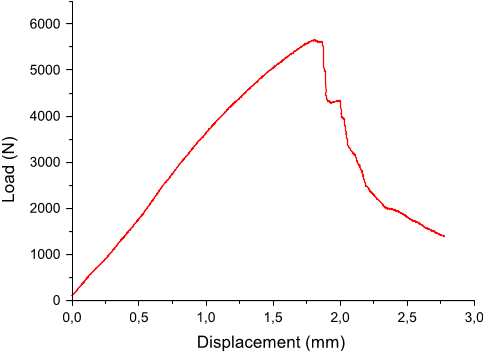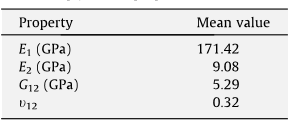Abstract: Esta tese propoe o uso da tecnica da correlacao de imagens na analise da fratura dinâmica em compressao de compositos reforcados por fibras de carbono (IM7-8552). Imagens de testes de impacto de corpos de prova bi-entalhados foram analisadas. Tambem e proposto um metodo para determinacao do tamanho dos subsets baseado nos padroes de speckle. A tenacidade a fratura dinâmica foi definida como a taxa de liberacao de energia no momento de carga maxima, durante o ensaio, e foi calculada por meio de uma integral-J extendida, no dominio de area. A comparacao entre os resultados das integrais area e contorno e apresentada e mostra que a integral de area e um metodo mais robusto quanto aos parâmetros do metodo, apresentando uma discrepância maxima de 14 % entre os resultados. Uma rede neural artificial foi usada para calcular a influencia relativa dos parâmetros. Os resultados nao apresentaram consistencia satisfatoria entre amostras da mesma classe, mas mostram, em certo nivel, concordância com resultados encontrados pelo grupo de pesquisa utilizando a metodologia da size-effect law. Alem disso, uma nova metodologia e proposta, utilizando redes neurais convolucionais para prever o inicio da fratura por meio dos campos de tensao. Um estudo de caso para especimes da classe III mostra que uma metodologia incluindo redes neurais convolucionais pode ser desenvolvida como uma alternativa a hipotese de carga maxima.










![Fig. 8. Geometry of compact compression test specimen (after [14], dimensions in mm).](/figures/fig-8-geometry-of-compact-compression-test-specimen-after-14-2il680ky.png)

![Fig. 7. Geometry of compact tension test specimen (after [14], dimensions in mm).](/figures/fig-7-geometry-of-compact-tension-test-specimen-after-14-3v7xvx69.png)
